The Magic of Nunavut
I enjoy the chase and challenge of big fish in wild places. That challenge offers with it the opportunity to explore some of the most exotic and inspirational wilderness of the far North. Nunavut has become one of my favorite places to fish and explore since my first introduction in 2003, when I flew into the Coppermine River to fish for arctic char.
Arctic char thrive in wild places that offer the kind of solitude, beauty and inspirational environments that few humans will ever get to enjoy because of the innate difficulty in accessing the remote northern frontiers. Nunavut is the largest yet least populated of all provinces and territories in Canada, and is primarily inhabited by the people of the Inuit nation. It can only be accessed by air and sea, which attributes to it remaining a fiercely wild and undisturbed land that remains beautifully close to its creation. With an 808,190-square-mile expanse of Arctic wilderness, containing hundreds of pristine rivers and lakes, Nunavut is the epicenter of some of the best trophy-class arctic char fishing on the planet.
Arctic char
The arctic char is a fierce fighting fish with a penchant for long powerful runs and acrobatic jumps as they fight. Their incredible strength will test both the endurance of the fisherman and tackle. The ideal setup for char is a 7-foot medium-action spinning rod with a high-quality reel that has a good drag. Unlike salmon, char continue to actively feed when they enter freshwater and they prefer brightly colored spoons and spinners. These fish will make blazing runs down the river using the rapids as an energy multiplier of their innate strength to escape. You will lose almost as many fish as you hook, as the char ply the rivers’ sweeping currents.
Char are anadromous and begin to migrate to freshwater as chrome-bright missiles that have been feeding in the Arctic Ocean’s currents and building strength for their journey to freshwater spawning grounds in the late summer and early fall. Char migrate to freshwater in the fall to spawn because they cannot survive in water temperatures below 32 degrees in the saltwater oceans in the winter. In fall, the spawning males will develop a kype (hooked jaw) and their flanks will literally blossom with an iridescent canvas of vibrant red, orange and pink highlights, making them one of the most beautiful piscatorial creatures on the planet.
The tale of two rivers
The Coppermine River is located in a pristine glacial valley winding 525 miles through the Northwest Territories and Nunavut before it empties into the Arctic Ocean at Coronation Bay, near the village of Kugluktuk. The broad expanse that is its heart is sculpted with immense boulders and barren slabs of rust- colored rock left behind by the rivers of ice that were its architect—this is a place that appears to be on the edge of where life began. A crystal-clear emerald ribbon of rapid water follows the broken contours of the land as it rushes to the sea, filling the air with the music as it plays over the chimes of granite on its path to the sea.
The Coppermine River
This is my journal entry for the Coppermine River fly out August 14, 2003:
Four of us took off from Plummer’s Trophy Lodge at dawn to fly to the famed Coppermine River in Nunavut to fish for Arctic Char. The view from the De Havilland Beaver was a vast panorama of lakes, winding rivers and tundra interspersed with a lacework of Caribou trails. The floats of the plane settled on a long stretch of the river and motored to the shore. When we jumped out of the plane onto shore, the ground was like stepping on a bowl of Jell-O as it undulated with each step. This was just a crust of earth with water underneath (melting permafrost). This was pretty scary stuff for my first time setting foot on Arctic soil. We were surrounded by tundra and boulders that are scattered about like a giant had tossed them from the sky. A crisp wind steeped in the intoxicating flavors of Caribou moss, and wet granite sweeps through the valley as we head upstream to the rapids to begin fishing. We have entered the magic of the Arctic!
We quickly set up our gear and began to fish. I worked the currents with a 3/4-ounce fluorescent-orange Devle Dog spoon and caught a half dozen magnificent char that ranged from 6 to 10 pounds during the afternoon, each one putting up a dramatic fight as they launched themselves skyward and danced on the current’s stage. They were beautiful, energetic creatures that looked like silver torpedoes with light blue and red markings on their flanks. One male had a hooked jaw with flanks of bright red and orange that reminded me of the ribbons of colorful maple leaves of fall in Michigan. Fresh sets of grizzly bear tracks scattered in the sand on the bank of the river, a reminder that we were sharing this wonderful place with the native wildlife. The four of us had an awesome time fishing along the gravel bars and watching each other catch fish after beautiful fish. Our guide fixed us a delicious lunch of fresh sizzling char fillets and oriental rice as we relaxed on the edge of heaven’s tailgate, feasting on succulent fillets and soaking up the beauty of the Arctic landscape. The view of the valley from the riverbank is a kaleidoscope of vast arctic wilderness that compels the soul with its mystical, enchanting beauty. It has been quite literally a delicious afternoon to be alive in this Arctic paradise. If there is a God, I think this is where he comes to rest his soul.
The Tree River
To the avid arctic char fisherman the Tree River is considered “Holy Water.” The “Tree” is a 6-mile ribbon of raging-fast water containing Class III rapids and waterfalls that hold the largest char in the world. My fishing partner Mike McGuire and I had flown into Plummer’s Tree River camp located in a “Tolkienesque” valley on the banks of the Tree River in northern Nunavut for the opportunity catch these famed, ruby- colored jewels of the North.
After getting our gear set up, we began casting heavy Dardevle Rocket spoons into a rushing pool only a couple hundred yards upstream from camp. Immediately, we both had fish catapulting into the sky and plowing like bulldozers through the frothing rapids, trying to shake our spoons. By the end of our first few hours on the river we had each landed seven or eight char including a line-class world-record on a Dardevle spoon. We took a quick break for dinner and were back on the river fishing until midnight, before finally heading back to our cabin for a little rest.
The next morning I asked my guide Bob if he could help me catch a char on my fly rod. He showed me to a large submerged boulder 50 feet from shore overlooking a deep run in the middle of the river. He told me to go out and stand on the rock. It would give me a little extra reach to a prime holding seam in the river. He gave me a few pointers on what he thought would be a good drift for my fly, and a short time later after hooking and losing two very big char, I had a beautiful char doing “air time” over the surface of the river and trying to strip the backing off my fly reel with long powerful runs through the stiff current. After a spirited exchange, I had a 36-inch male char adorned in opulent hues of orange, green and pink settled in the net. This was one of the most beautiful creatures I have ever had the luck to catch with a fly rod, and it turned out to be a new fly rod line-class world record. During our short time on the Tree River my friend Mike and I landed over 20 beautiful char and set two line-class world records. There are just a few fisheries in North America that produce average catches of arctic char well over 12 to 15 pounds, and they are all located in Nunavut, including the current IGFA world record of just over 32 pounds, which was caught on the Tree River. As the float plane ascended from the river later that morning, Mike and I realized we had been blessed by the magic of one of the most majestic rivers on earth.
The wisdom and wonder of the Arctic
Fishing is the engine that prompts me to explore the beauty and wonder of the earth’s most remote places, but the significance of the experience is more than simply catching fish. Immersing oneself in the rhythm and cadence of the land, while enjoying the journey and adventure of wild places, is what creates memories of a lifetime. The wisdom and wonder of the Arctic is a great elixir for the soul, and the Territory of Nunavut serves up the best there is.
For more information on Plummer’s Arctic Lodges visit plummerslodges.com or call
800-665-0240. Or visit Nunavut Tourism at nunavuttourism.com.
MWO
SHARE THIS POST
You may also like...
Did you enjoy this post?
You can be among the first to get the latest info on where to go, what to use and how to use it!
John Cleveland
John Cleveland is the Marketing Director for Dardevle spoons, made by Eppinger Manufacturing Company. He is also an award-winning freelance outdoor writer and featured speaker on topics relating to his passion for catching big fish in wild places with fly and conventional tackle. Email: john@dardevle.com.
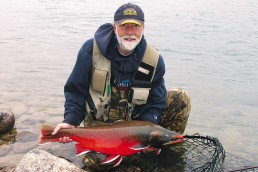


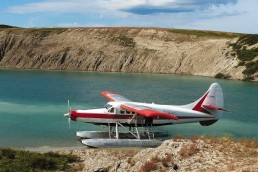
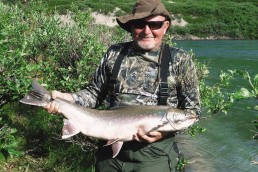
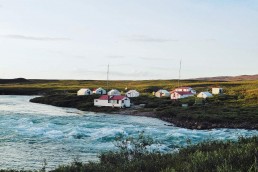
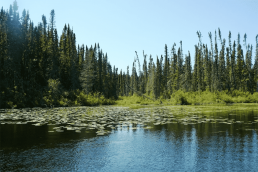
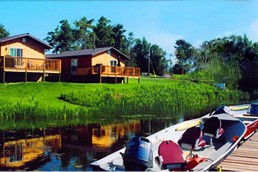

[…] https://midwestoutdoors.com/destinations/nunavut-canada-fishing-destinations-char/ […]
[…] https://midwestoutdoors.com/destinations/nunavut-canada-fishing-destinations-char/ […]